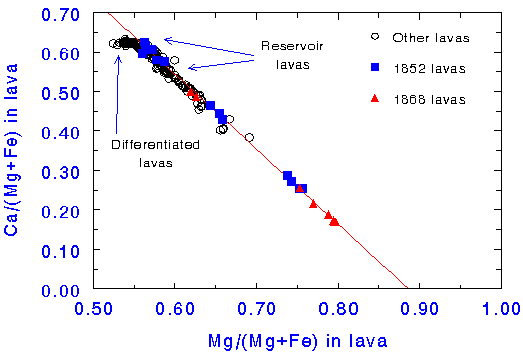
Abstract. Picritic lavas were erupted on Mauna Loa in 1852 and again in 1868. They comprise only about 7% by volume of lavas erupted in historical (1843-1984) times. In both instances the picrites were preceded by the eruption of less MgO-rich lavas. Since most Mauna Loa lavas are thought to originate from a shallow, long-lived, continuously replenished, mixed and homogenized magma reservoir, the eruption of picritic lavas is an unusual and potentially informative event. Either they simply reflect the accumulation of olivine into these "reservoir lavas" or they are indicative of more MgO-rich parental, or possibly primary, magmas. Geochemical data, combined with mineral analyses, indicate that the picrites do not reflect melt compositions. They result from the accumulation of 10-27% olivine (Fo87-89) into a parental magma with a lower MgO content. This magma was not typical of the low MgO (7-8%) lavas commonly erupted on Mauna Loa. It was more MgO-rich, with an MgO content of about 13%, and was less oxidized than most common subaerial lavas. The associated low-MgO lavas are not the complementary differentiates to the picrites, but probably reflect mixing between the picritic magmas and magma from the shallow magma reservoir. Because of the close geochemical coherence between the picrites and the systematic temporal variations in the composition of the more normal "reservoir lavas", it seems likely that they are derived from a deeper portion of a compositionally zoned magma column. Their eruption may be related to high magma supply rates, combined with vigorous activity in the magma column.


